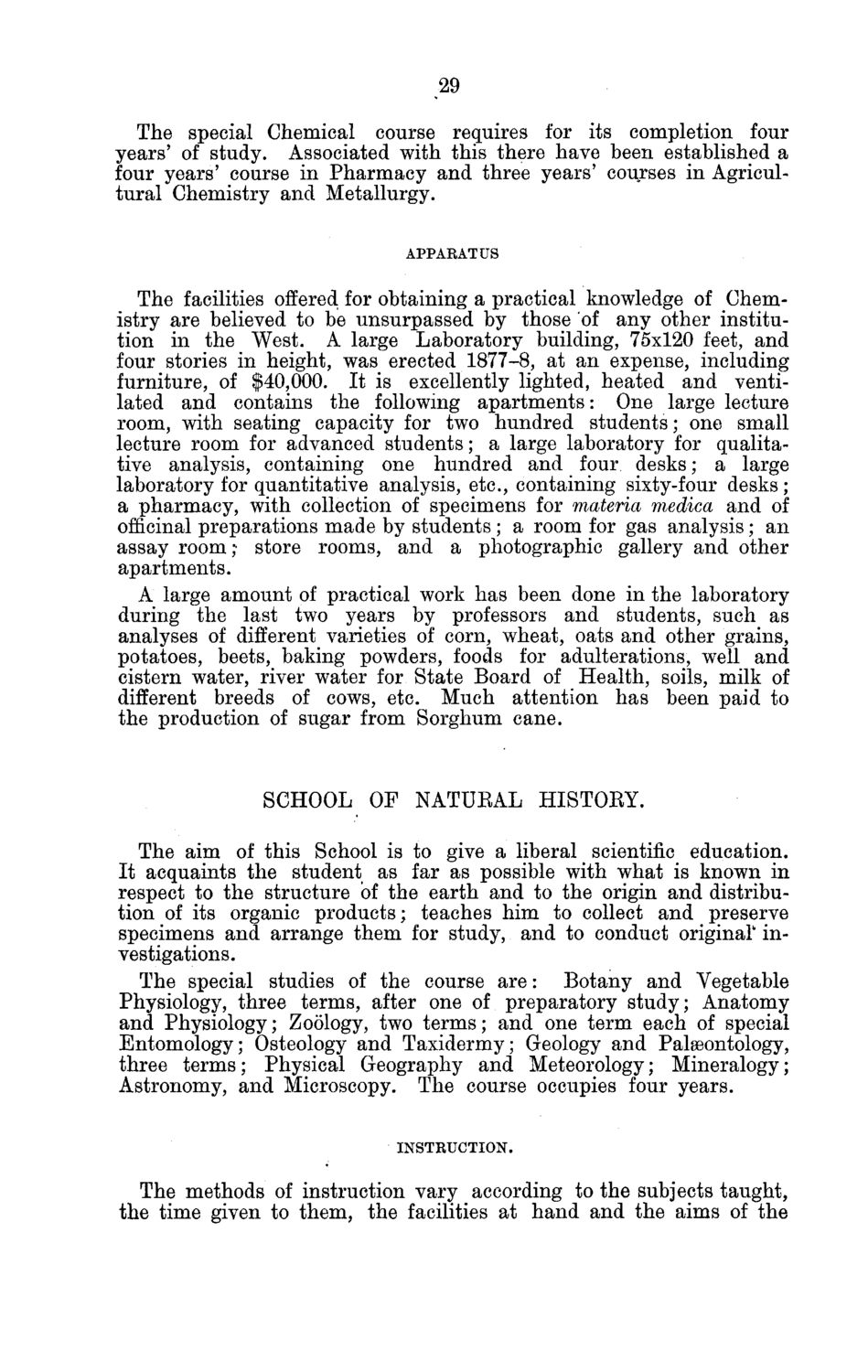| |
| |
Caption: Board of Trustees Minutes - 1880
This is a reduced-resolution page image for fast online browsing.

EXTRACTED TEXT FROM PAGE:
29 The special Chemical course requires for its completion four years' of study. Associated with this there have been established a four years' course in Pharmacy and three years' courses in Agricultural Chemistry and Metallurgy. APPARATUS The facilities offered for obtaining a practical knowledge of Chemistry are believed to be unsurpassed by those of any other institution in the West. A large Laboratory building, 75x120 feet, and four stories in height, was erected 1877-8, at an expense, including furniture, of $40,000. It is excellently lighted, heated and ventilated and contains the following apartments: One large lecture room, with seating capacity for two hundred students; one small lecture room for advanced students; a large laboratory for qualitative analysis, containing one hundred and four desks; a large laboratory for quantitative analysis, etc., containing sixty-four desks; a pharmacy, with collection of specimens for materia medica and of officinal preparations made by students; a room for gas analysis; an assay room;- store rooms, and a photographic gallery and other apartments. A large amount of practical work has been done in the laboratory during the last two years by professors and students, such as analyses of different varieties of corn, wheat, oats and other grains, potatoes, beets, baking powders, foods for adulterations, well and cistern water, river water for State Board of Health, soils, milk of different breeds of cows, etc. Much attention has been paid to the production of sugar from Sorghum cane. SCHOOL OF NATUKAL HISTOEY. The aim of this School is to give a liberal scientific education. It acquaints the student as far as possible with what is known in respect to the structure of the earth and to the origin and distribution of its organic products; teaches him to collect and preserve specimens and arrange them for study, and to conduct original" investigations. The special studies of the course are: Botany and Vegetable Physiology, three terms, after one of preparatory study; Anatomy and Physiology; Zoology, two terms; and one term each of special Entomology; Osteology and Taxidermy; Geology and Palaeontology, three terms; Physical Geography and Meteorology; Mineralogy; Astronomy, and Microscopy. The course occupies four years. INSTRUCTION. The methods of instruction vary according to the subjects taught, the time given to them, the facilities at hand and the aims of the
| |